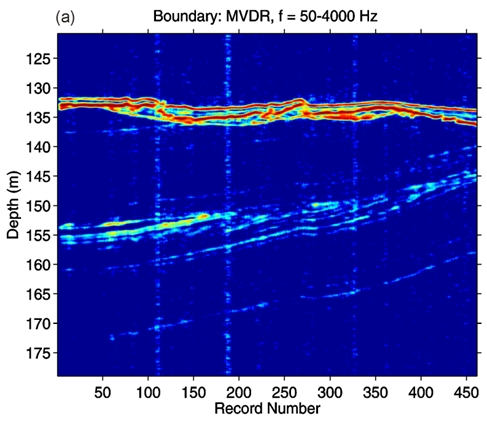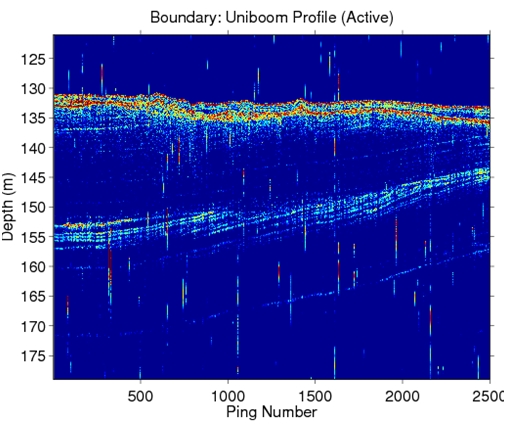Remote Sensing with Ambient Noise
Peter Gerstoft - Gerstoft@uscd.edu
Scripps
Institution of Oceanography - UCSD
La Jolla, CA 92093-0205
http://www.mpl.ucsd.edu/people/pgerstoft/
Martin Siderius
Portland State University
Portland, OR
Jian Zhang and Heechun Song, SIO
Scripps
Institution of Oceanography - UCSD
La Jolla, CA 92093-0205
Popular version of paper 3pID2
Presented Wednesday afternoon, October 28, 2009
158th ASA Meeting, San Antonio, TX
Acoustic noise is ubiquitous in the ocean. The noise comes from many sources including ships, marine life, and breaking waves. For sonar systems, this ambient noise has generally been considered a nuisance. However, recent studies have shown that the noise itself contains valuable information about properties of the ocean, Earth and atmosphere. For example, distant storms have been observed using measurements of low frequency (0.1 Hz) noise that has propagated through the Earth's core. Wind speed over the ocean has also been determined from hundreds of kilometers away using noise measurements at coastal observing stations.
An example of this involves tracking a storm in the deep East Pacific ocean (water depth about 5 km) from the noise sensed on an array of land-based geophones in southern California 8000 km away. The storm created ocean waves at a period of about 10 s. These ocean waves attenuate with depth and cannot be sensed at the ocean bottom. However two wave systems can interact and create a standing wave at half the period, 5 s, which will reach the bottom nearly unattenuated. This is the wave that can be sensed 8000 km away.
Another example is the process of using breaking wave noise to image the seabed structure tens of meters below the ocean floor. The breaking waves provide a type of overhead acoustic lighting analogous to the moon and stars providing natural light that allows one to see at night. The basic principle involves correlating noise signals arriving from the sea-surface with the echoes that reflect from the seabed. This echo processing is similar to active sonar systems (such as those used in nature by bats), but the sound source is the background noise. As concerns are raised about the impact of man-made sound on the marine environment, it is not surprising that using naturally occurring noise for remote sensing has become a hot topic in acoustical oceanography. Essential components of noise processing will be described along with examples illustrating applications. A recent application involves extracting the ocean bottom profile from noise.


Figure 1. Map showing tracks of the P-wave source regions (*) and Super Typhoon Ioke (o). The track of peak energy of source regions is derived from back-projecting the SCSN beamformer outputs as indicated in the insert. The best track of Super Typhoon Ioke is extracted from an ocean wave hindcast, as indicated in the insert. Bottom figure shows sketch of propagation path.


Figure 2. Seismic profile (left) obtained from noise and (right) obtained from active source. As the vertical array drifts over the seabed the reflection time between the down- and up-going noise gives the reflections in (a). In (b) a horizontal array and a source is towed over the same ground. Note the strong resemblance of the two profiles